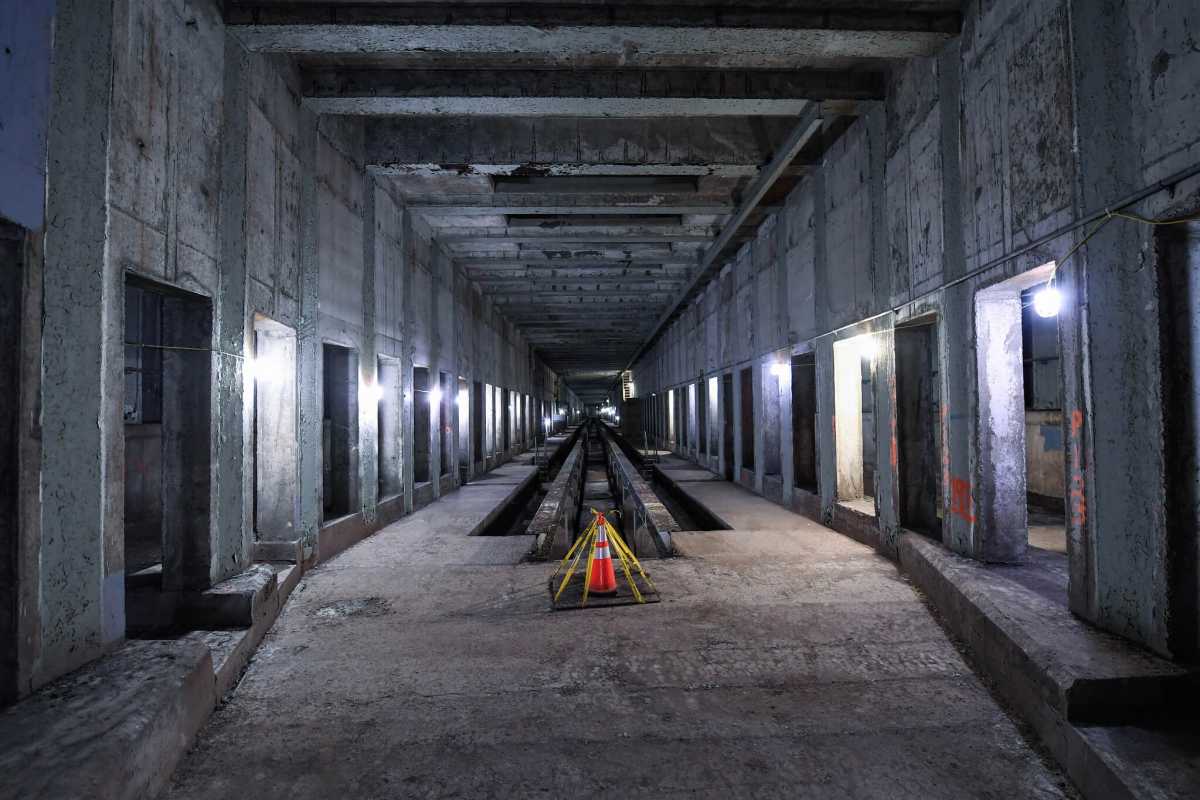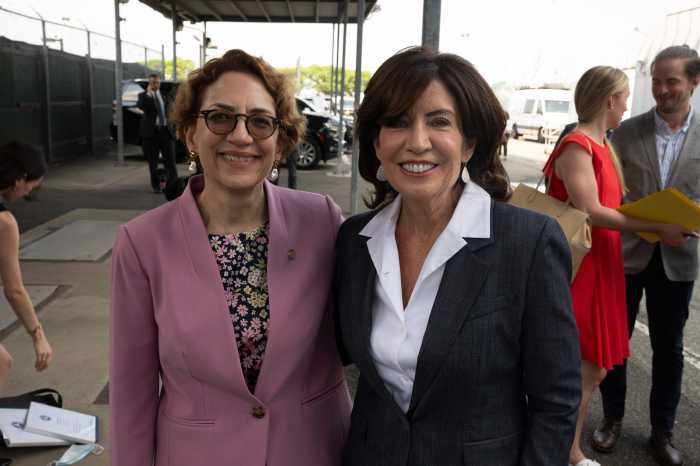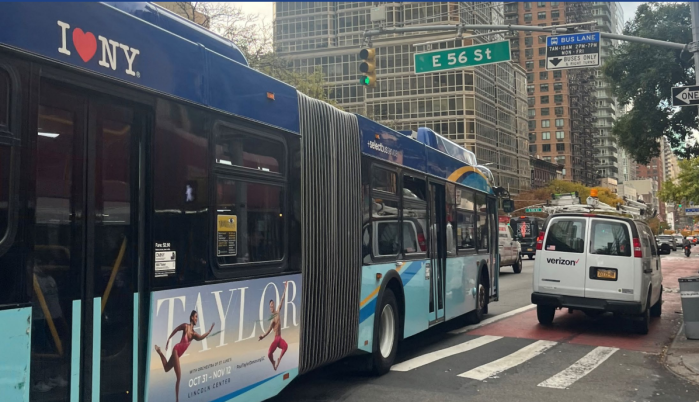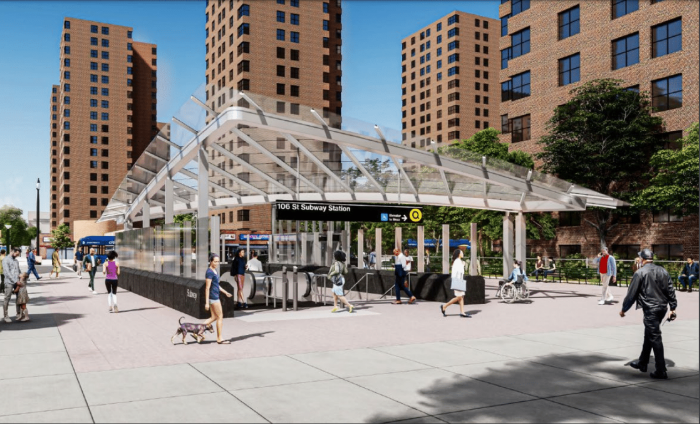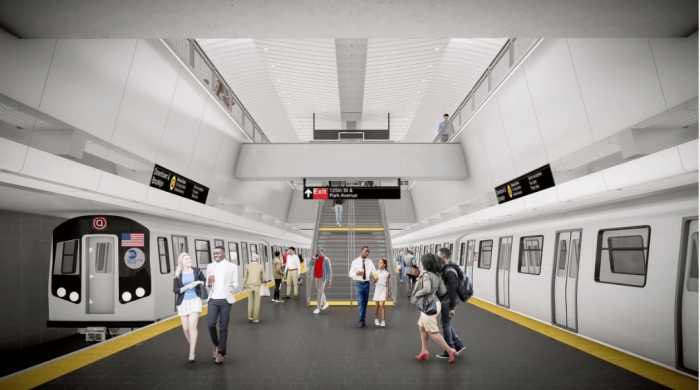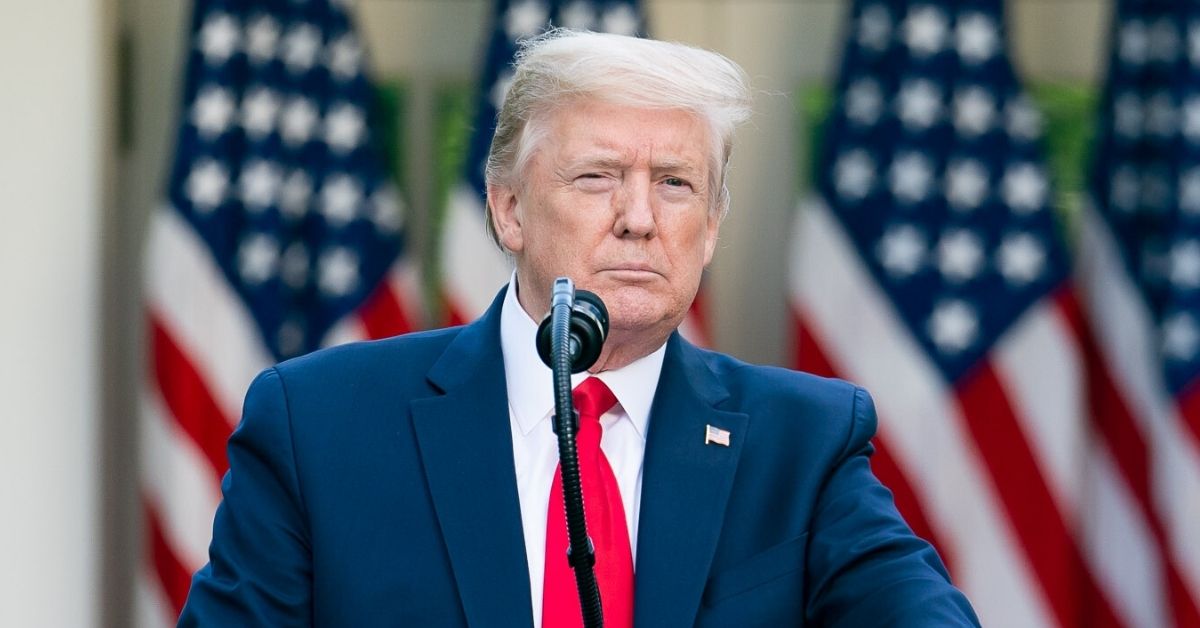Work is set to resume on the Second Avenue Subway extension, one of the marquee projects put on ice by Gov. Kathy Hochul’s pause on congestion pricing, after the governor allocated $54 million on Tuesday to restart the frozen work to relocate utilities underground.
The $54 million will be reallocated from the state’s discretionary capital funds for major construction work to support the relocation of underground utility lines on Second Avenue between 105th and 110th streets. That work began in March as the first contract for the extension of the Q train to 125th Street and Lexington Avenue — but the contractor, CAC Industries, was issued a stop-work order in June after Hochul put a temporary kibosh on the Manhattan tolling scheme.
In a press release, the governor’s office said the cash infusion will allow work to restart immediately and get back on schedule “while broader funding issues are resolved.”
“When I announced the pause on implementing congestion pricing, I directed my team to think creatively about how to keep these generational investments moving forward,” Hochul said in a statement. “Now, we are committing the funds needed to continue the utility relocation contract, the first step to building this transformational project to meet the needs of everyday New Yorkers.”
In a statement, MTA Chair and CEO Janno Lieber said he is “grateful” to the governor for the funding backstop, adding it “puts MTA in a position to keep the overall Second Avenue Subway Phase 2 project on schedule” for now.
CAC’s original contract was worth $182 million, and neither the governor’s office nor MTA could immediately say whether the $54 million infusion would cover the full utility relocation. Further work on the extension remains on pause, potentially imperiling $3.4 billion in federal grants to the project.
The Second Avenue Subway extension — adding three stops to the Q line and connecting underserved East Harlem to the transit system — was perhaps the grandest project that was set to be funded by congestion pricing, which was to charge $15 for most motorists to drive into Lower Manhattan.
But it was just one of many maintenance and modernization projects, worth billions of dollars and supporting tens of thousands of jobs, that were set to be funded with revenues from the toll, many of which the MTA has admitted are less “sexy” than big expansion projects like Second Avenue.
They include replacing 90-year-old signals, responsible for many subway delays, with modern computer-based technology, building elevators, escalators, and ramps to ensure subway stations are accessible for people with disabilities, and purchasing electric buses to replace diesel ones, plus some $3 billion of “state of good repair” work intended to keep the system in working order.

Assuming Hochul will eventually un-pause
At the MTA Board’s Capital Committee meeting on Monday, construction chief Jamie Torres-Springer said the MTA is assuming the governor will come through with funding to replace the $15 billion lost from pausing congestion pricing, plus federal grants the MTA may not be able to take advantage of.
“The assumption is that the projects funded by congestion pricing are moving forward,” said Torres-Springer. “As the governor has said, and we take her at her word, the $15 billion will be restored.”
That is critical not only to finishing its current $55 billion capital plan, but also ensuring the MTA can keep on a modernization push in its next capital plan, which is due in October.
Torres-Springer noted on Monday that the MTA needs to replace about 25% of its subway car fleet as much of the agency’s rolling stock passes 40 years of age, while the steel on about half of the agency’s elevated structures is beyond its useful life and needs repair.
Failing to make the investments could prove catastrophic, MTA bigs warned: it could mean elevated subway structures collapsing like the West Side Highway in the 1970s, the 100-year-old Grand Central train shed falling to pieces and snagging commuter rail service on Metro-NOrth, or failing to meet the state and MTA’s ambitious goals to reduce carbon emissions.
“New Yorkers aren’t fools. While favoring her pet projects but stalling congestion pricing, Governor Hochul leaves trains unreliable, stations inaccessible, buses and Access-a-Ride stuck in gridlock, and millions of riders facing steep fares hikes and deep service cuts,” said Danny Pearlstein, policy & communications director at the Riders Alliance, which recently sued the governor in a bid to start congestion pricing.
On Tuesday, at an unrelated event, Hochul said a plan to replace the congestion pricing money will be in next year’s state budget, but the details remain vague-to-nonexistent.
Read More: https://www.amny.com/nyc-transit/



